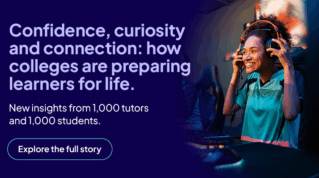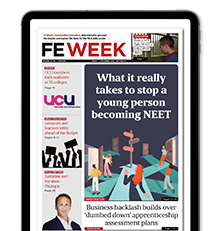The latest report from the Sutton Trust, Social mobility – the next generation makes for depressing reading. It claims there has been a 12 per cent decline in social mobility for young people resulting from lost learning during the pandemic and the cost-of-living crisis.
Other research echoes these findings. In its last annual report, the Education Policy Institute states that educational inequalities existed before the pandemic and that the last few years has seen the narrowing of the gap stall or even go into reverse.
The sad conclusion is that birth is still the best predictor of future success. This was not always the case. If you were a ‘baby boomer’ born in the 20 years after the end of the Second World War you had a fair chance of owning your own home by the age of 40 and could look forward to free university tuition. Now the picture is bleaker. If you have a bad start in life, then it’s tough luck.
Reversing the decline in social mobility is a big ask and the solutions are not just about better education. The cost-of-living crisis and escalating property prices are part of the problem. But the situation may not be as gloomy as some might imagine.
The 2022 State of the Nation report from the government’s Social Mobility Commission claims that the educational attainment gaps between pupils from higher and lower socio-economic backgrounds have narrowed, although this does not take into account the full effects of the pandemic.
Social mobility and its causes are much more nuanced and not a simple equation that can be measured by the number of people achieving entry to universities, says the report. The authors are pressing for a wider perspective, saying that education should cover routes such as further education and apprenticeships, as well as early years, schools and universities. They want to start a wider conversation to find solutions.
Distance learning providers need to be part of the debate
The further education sector must be part of that conversation. But we need to take an even broader view. As a provider of distance learning with a mission to break down the barriers that prevent social mobility, distance learning providers like the National Extension College need to be part of that debate.
Our core mission is to enable people to learn flexibly – at their own pace, in their own time and where they want to. When we were set up in 1963 by the social reformer and entrepreneur Michael Young, our main purpose was to provide second chances for people who had missed out on education during the Second World War.
Today, the majority of our students are aged 18 to 24, with an increasing number of under 18s. Many of our younger students need to gain additional qualifications in order pursue a particular career or enter higher education. Others want to learn a particular subject that their school or college doesn’t offer. Then there are those who have had interruptions to their formal education through illness and have to catch up by learning in their own time and place.
Society and the economy have changed vastly since we were set up. Then, opportunities to break through class barriers were greater, not least because of a thriving adult education sector. If Michael Young was alive today, he would undoubtedly be dismayed at the state od social mobility in 2024.
But he would see opportunity too. Technological advances and more flexible working practices mean distance learning is more accessible than ever, and second chances to make a success of education could and should be plentiful. Rapid change and the need to upskill and reskill also mean that many more of us are likely to be ‘second-chance learners’ – further breaking down the stigmas around poor school results.
So our message to the next government (whichever party wins) is clear: To address the inequalities in our society, they must fully embrace second-chance learners and finally look beyond traditional education providers to extend the ladder of opportunity.












Your thoughts